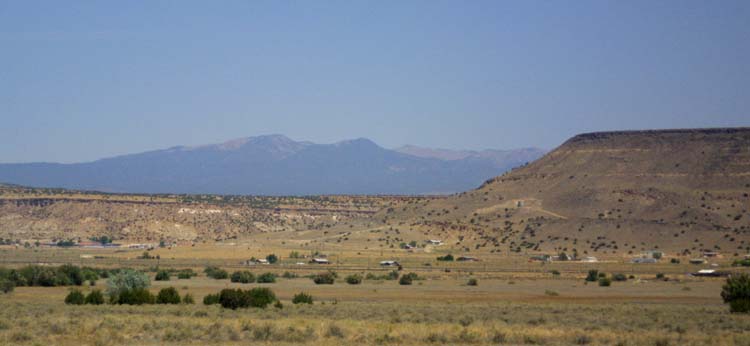
|
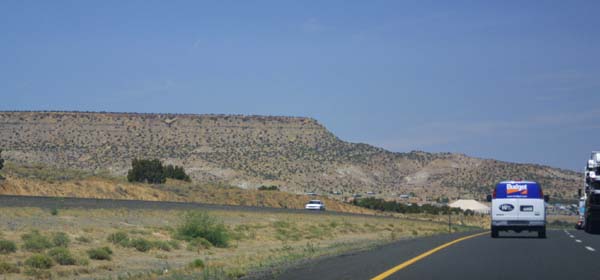
|
More mountains, along with some nearby hills. |
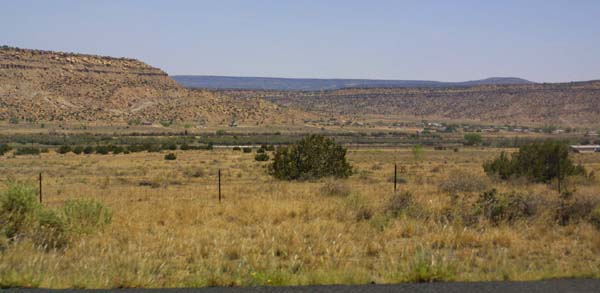
|
More mesas with mountains in the background. |
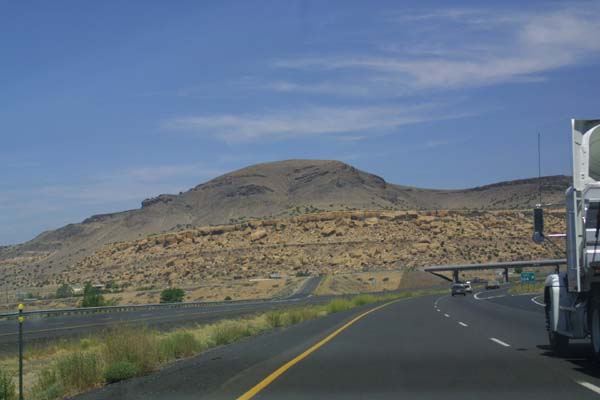
|
This odd looking rock formation is likely a lacolith which has become
uncovered, over the millennia, by the erosion of the softer surrounding rocks. |

|
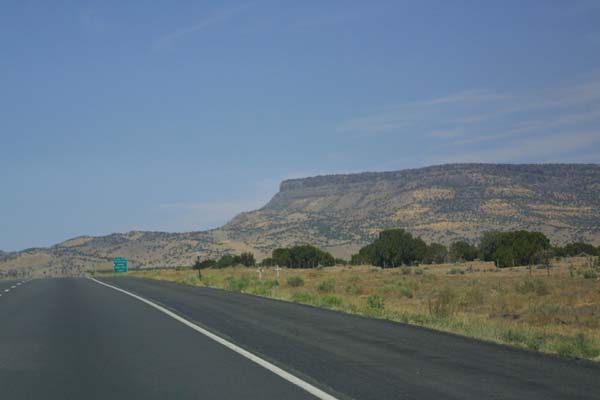
|
The road heads off towards a notch in the ever present hills. |
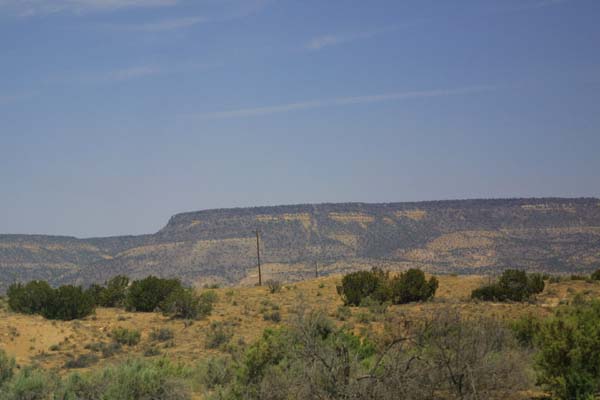
|
A look up the arid grade towards the rough, rolling highlands. |
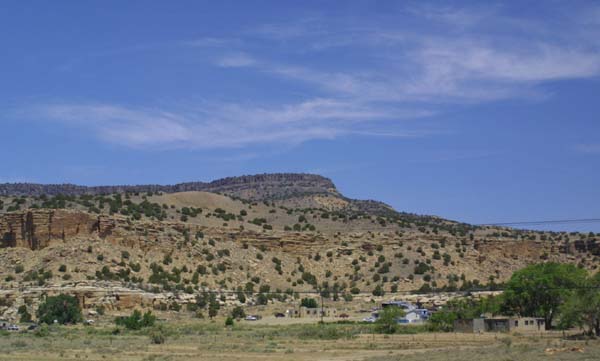
|
Cliffs jut out from the smoothly worn sides of the accompanying hills. |
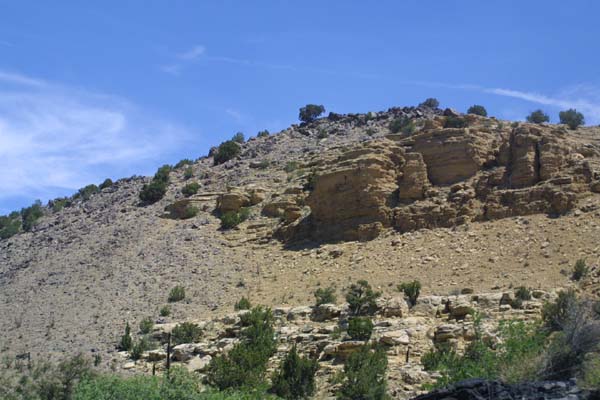
|
A close view of some of the surviving bedding in this well worn cliff. |
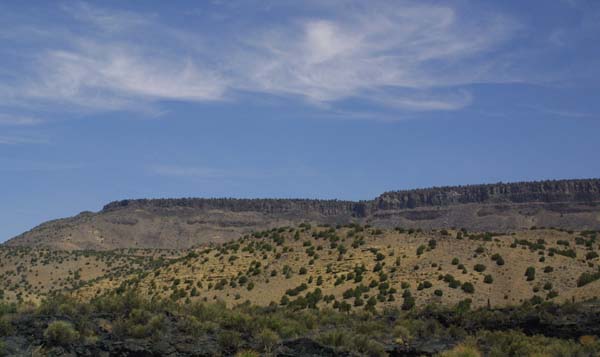
|
Cleavage of the top of the cliff face is obvious in this photo. All
of these structures are slowly wearing down, as they are attacked by the
infrequent rains. |
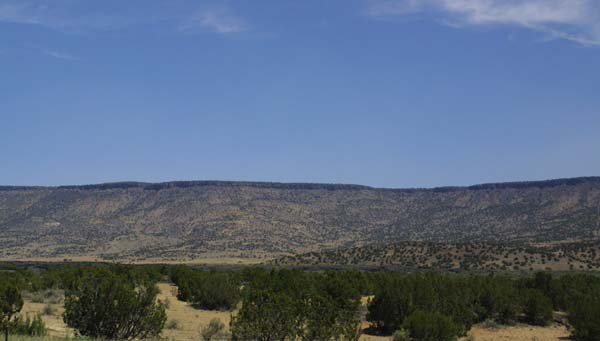
|
A far off look at the time smoothed mounds of this part of the Southwest.
Slow though it may be, the wearing down of this former seabed is relentless. |
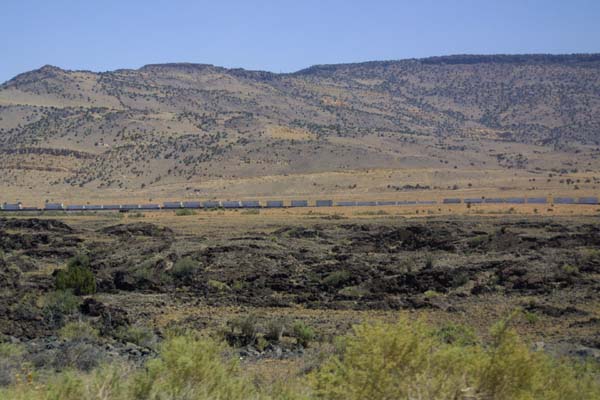
|
A train loaded with cargo containers rolls beneath the hills. In
the foreground can be seen some exposed rock faces. |
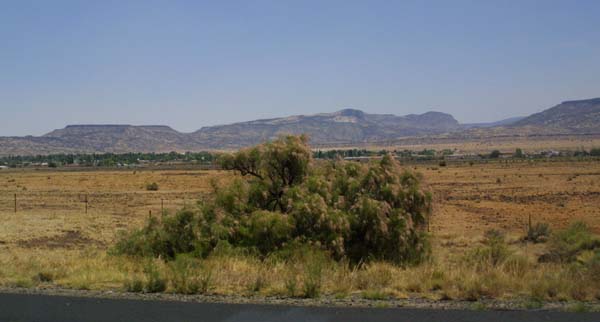
|
Breaks and notches abound in the ever present dry highlands. |
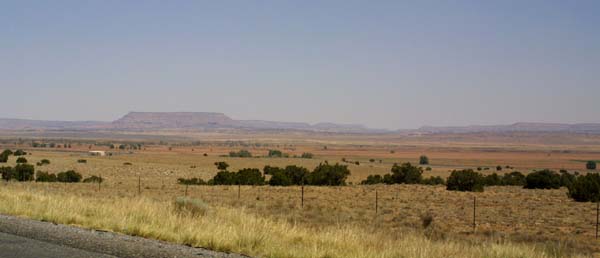
|
A mesa stands in the distance. We are momentarily in a flat area,
but the terrain out here is always changing. |
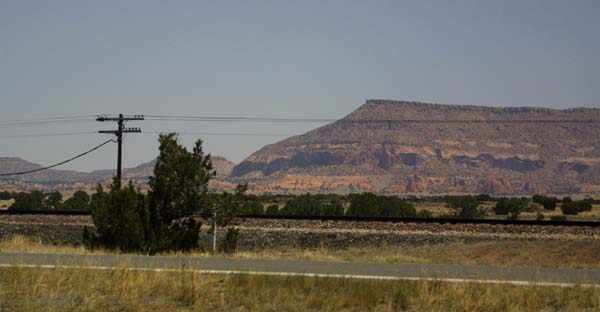
|
The sloping and multi colored side of a well bedded cliff. The low
mesas and buttes, along with most of the highlands, tend to be formed by erosion.
The high mountains, or towering cliffs tend to be formed by fault blocking,
and are technically tilted block, or Horst structures. It is sometimes hard,
at least for me, to tell the difference. |
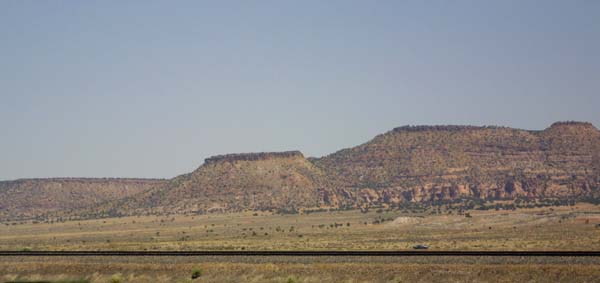
|
More mesas and buttes, covered in scrub, and set off by a single
rail line. This photo could have been taken in the 1870's. |
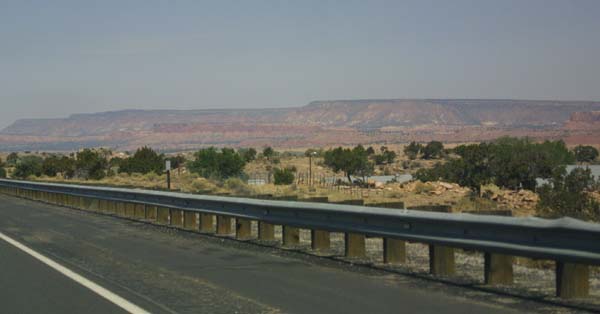
|
A look from the road, down a line of mesas. |
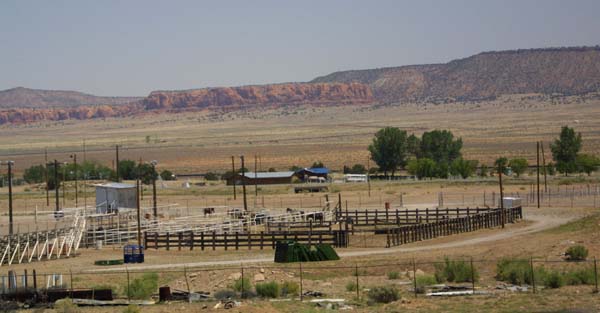
|
A small rodeo. it seems like every county, or every other town has
one out here. |

|
A few isolated sandstone formations. These are the first scattered
examples, but we will be seeing large groups of them as we approach Arizona. |
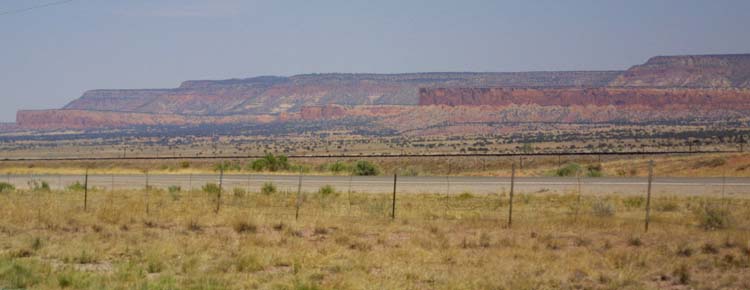
|
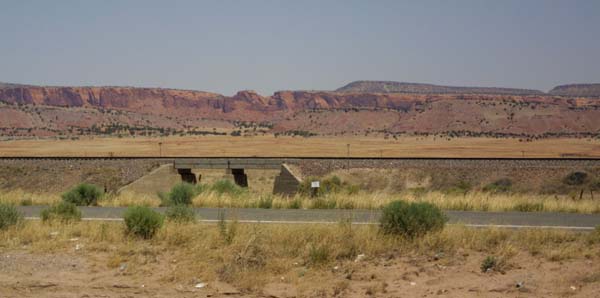
|
A small rail bridge goes over a dry wash. The southwest is full of
such structures. |
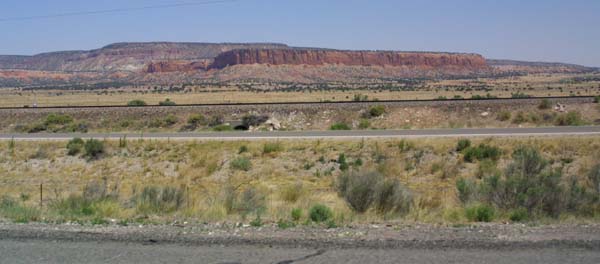
|
A series of roads and rails set off a line of cliffs. |
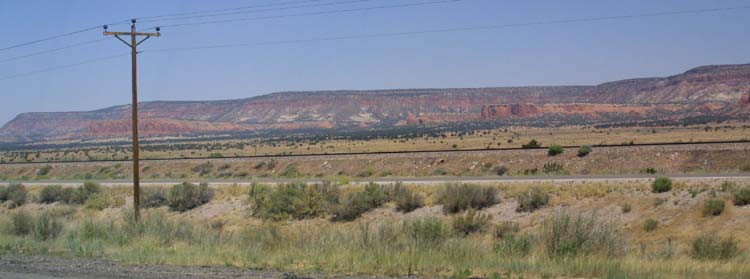
|
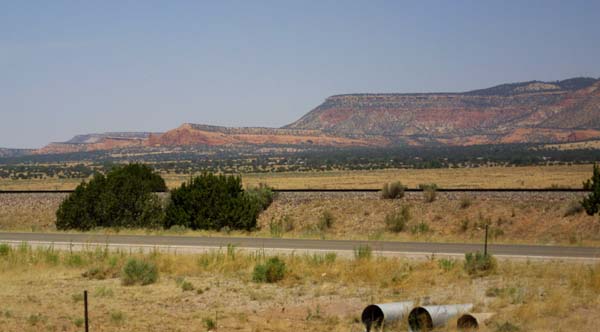
|
More scenes from straight out of an old western movie. |
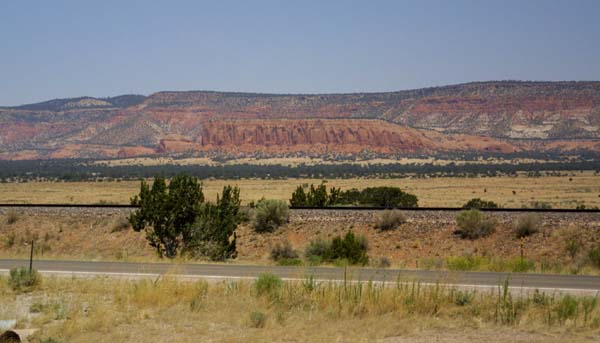
|
Typical tilted fault block, and graben geology. There may even be
some Horst structures here, though it is hard to tell, except from maps or
from the air. |
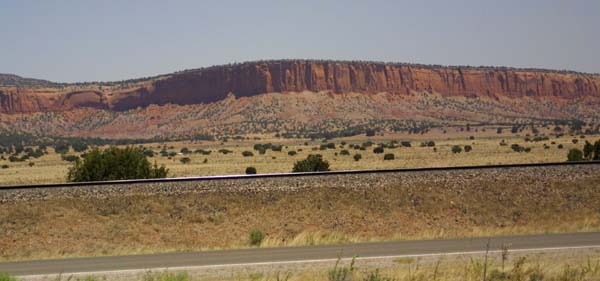
|
Magnificent palisades rear up in the distance. |
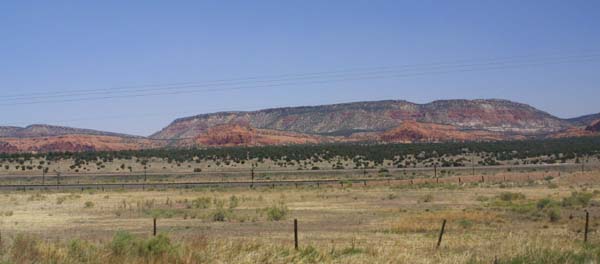
|
A beautiful series of fault block and erosion structures. |
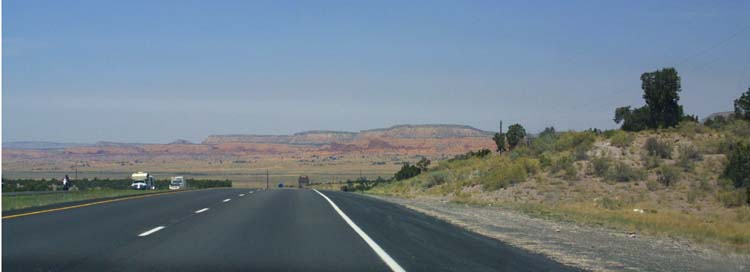
|
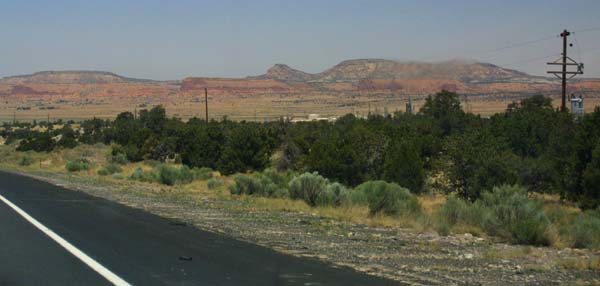
|
The ever present road is our one connection to the world we know
as it guides us through the wonders of the geology of the Southwest. |
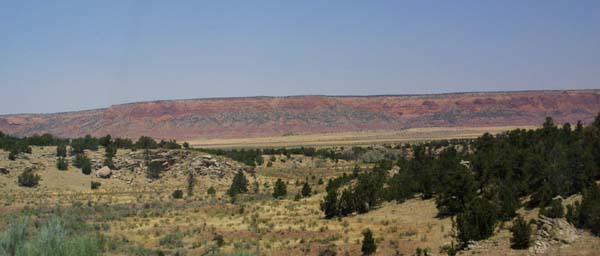
|
The "red rock" sandstone of the west. |